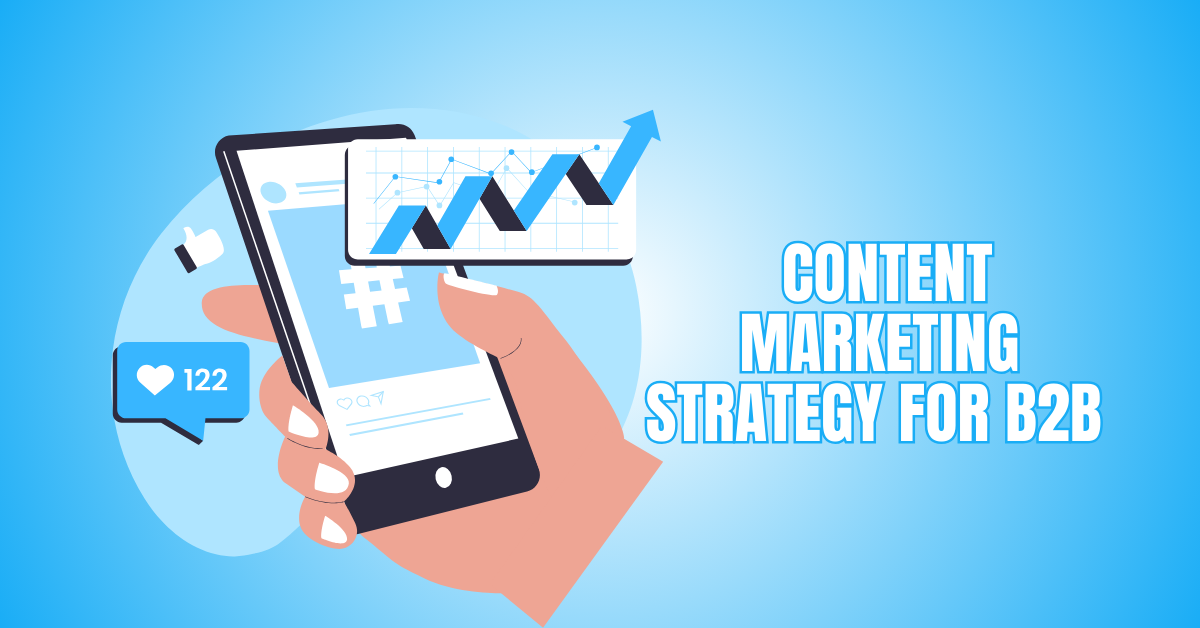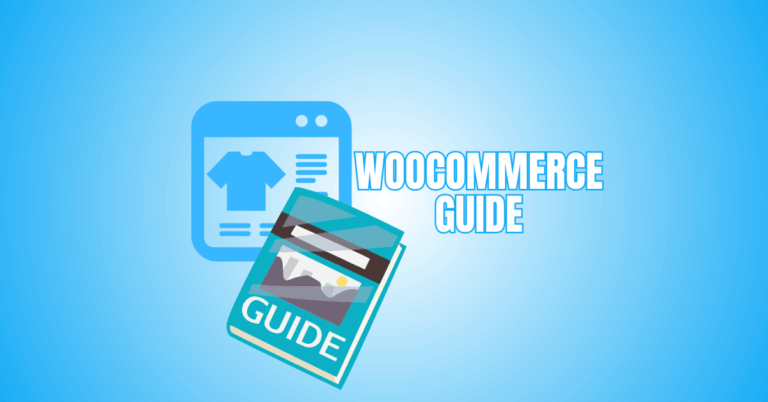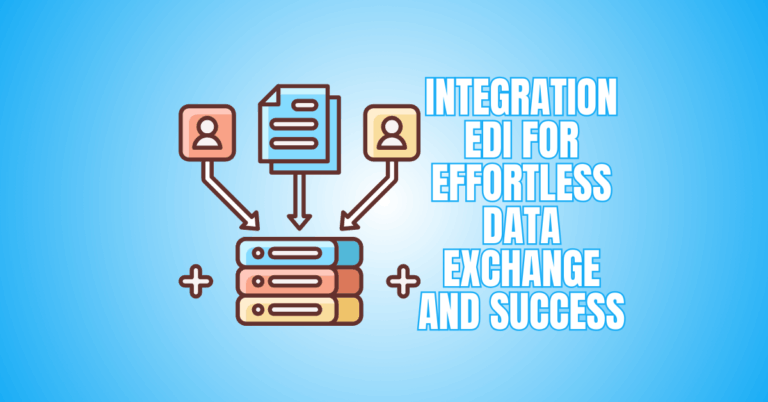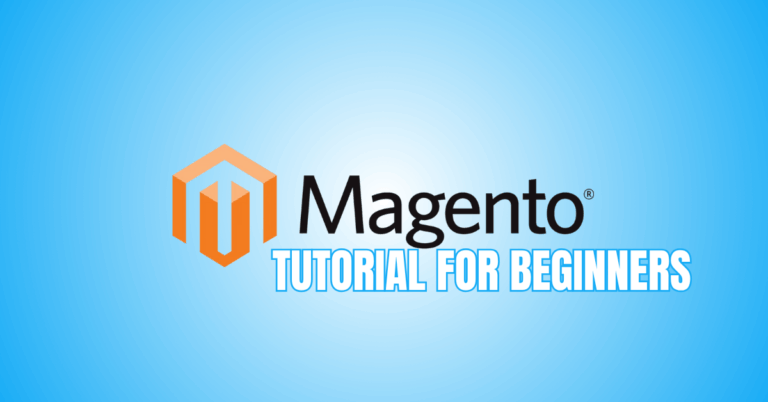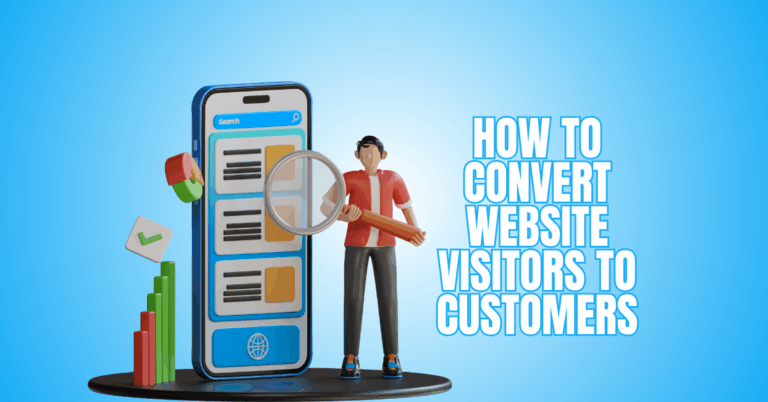Effective Content Marketing Strategy For B2B
Developing a powerful Content Marketing Strategy for B2B is essential in today’s competitive digital landscape. It’s no longer just about publishing content—it’s about creating value, building trust, and driving measurable results.
Whether you’re aiming to generate qualified leads or position your brand as an industry leader, a well-crafted B2B strategy ensures long-term success.
This guide explores proven tactics to elevate your B2B content and fuel business growth.
Effective Content Marketing Strategy For B2B Sales Teams
1. Set Clear And Measurable Goals
Your content marketing strategy should begin with well-defined goals. These objectives must be Time-bound, Relevant, Specific, Measurable, and Achievable (SMART).
For example, increasing qualified leads by 30% in the next quarter through gated whitepapers is a focused goal. Common objectives include brand awareness, lead generation, audience engagement, and customer education.
By setting clear goals, you can measure the effectiveness of your content and optimize based on performance. Use tools like Google Analytics and CRM platforms to monitor content ROI, user behaviour, and conversion rates. This data helps you refine your strategy continuously and improve efficiency over time.
Key Points
- Define SMART goals from the outset.
- Common goals: awareness, engagement, and lead generation.
- Use analytics (e.g., Google Analytics, HubSpot) to measure success.
- Adjust strategy based on performance.
2. Define And Understand Your B2B Audience
The secret to producing content that connects is knowing your target audience. Develop detailed buyer personas based on job roles, industries, challenges, goals, and buying behaviour.
For B2B, this could include procurement managers, IT directors, or marketing executives. Each has different decision-making power and content preferences.
Conduct surveys, analyze customer data, and review CRM insights to uncover what content influences their buying decisions.
Once you have defined personas, tailor your messaging, tone, and content formats to meet their specific needs. Personalized content significantly improves engagement, builds trust, and drives better outcomes across the sales funnel.
Key Points
- Create detailed personas (e.g., procurement manager, CMO).
- Use surveys and analytics for data-driven personas.
- Tailor messaging to each persona’s needs.
- Personalization boosts engagement and trust.
3. Map Content To The Buyer’s Journey
Each piece of content ought to correspond with a particular phase of the buyer's journey: awareness, consideration, or decision. Awareness-stage content, like blog posts and infographics, educates prospects on problems they face.
Consideration-stage content—such as whitepapers, case studies, or webinars—provides detailed insights into possible solutions.
Decision-stage content includes demos, testimonials, and pricing sheets that support final purchase decisions. You can make sure prospects receive pertinent information at the appropriate moment by matching your content to these stages.
This journey-based approach helps guide leads smoothly through the funnel, builds stronger relationships, and ultimately increases conversion rates.
Key Points
- Align content with buyer stages.
- Awareness = blogs; Consideration = case studies; Decision = demos.
- Provide relevant info at each funnel step.
- Builds trust and drives conversions.
4. Choose The Right Content Formats
Different formats serve different purposes and audiences. Blogs are excellent for SEO and ongoing engagement. Whitepapers and eBooks are perfect for in-depth exploration and lead generation through gated content.
Webinars offer real-time interaction and demonstrate thought leadership. With prospective customers, case studies foster confidence by providing social proof.
Podcasts and videos help capture attention on the go and explain complex topics. Use a mix of formats to address varied preferences and increase content reach.
Monitor performance data to identify which formats drive the most engagement, and repurpose successful content across platforms for maximum value.
Key Points
- Format choice depends on the audience and stage.
- Use blogs, whitepapers, videos, webinars, and case studies.
- Repurpose content across channels.
- Analyze format performance to optimize ROI.
5. Develop A Content Calendar
A content calendar helps you plan, schedule, and execute your strategy consistently. It specifies what will be produced, when it will be released, who will be in charge, and which platforms it will be available on.
Calendars prevent content gaps, maintain publishing frequency, and align content with campaigns, product launches, or seasonal trends.
Organizing projects and monitoring progress is made simple using tools like Trello, Asana, or Google Sheets. A well-maintained content calendar fosters team collaboration, keeps stakeholders informed, and ensures that your strategy remains proactive rather than reactive throughout the year.
Key Points
- Plan ahead to avoid content gaps.
- Use tools like Trello, Notion, or Google Sheets.
- Align with business goals and timelines.
- Improves team collaboration and publishing consistency.
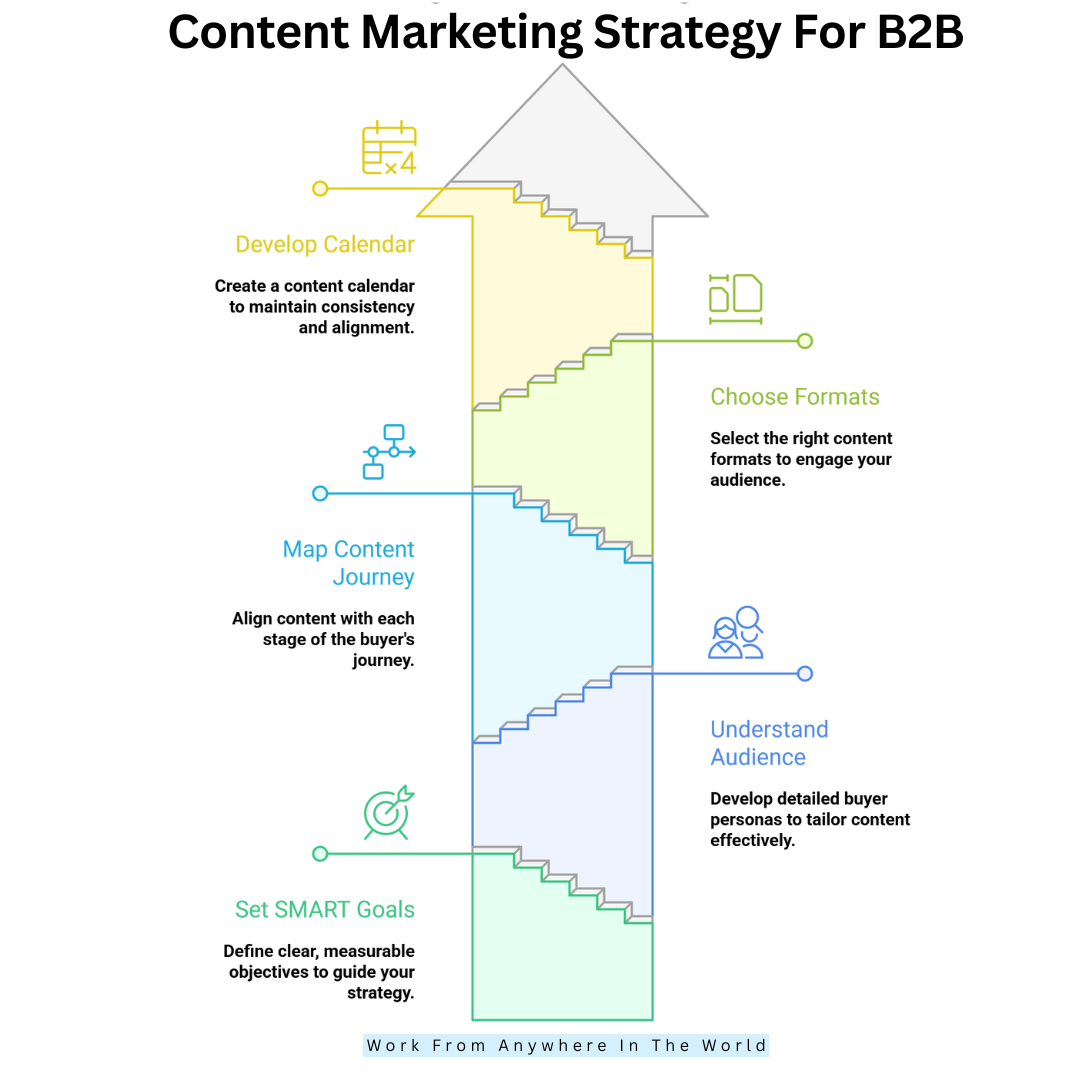
6. Create High-Quality And Value-Driven Content
B2B content must provide real value. It should be well-researched, data-backed, and tailored to the audience’s needs. Avoid generic content—focus on solving specific problems, answering questions, or offering actionable insights.
Use credible sources, include visuals or charts where helpful, and ensure readability with clear formatting. Well-crafted content enhances brand credibility and keeps audiences coming back.
Invest in professional writing, design, and editing when needed. High-quality content stands out in competitive industries, earns backlinks, and supports long-term SEO growth. Your goal is to educate, inspire, and build lasting relationships through every content piece.
Key Points
- Prioritize depth, clarity, and relevance.
- Include stats, visuals, and expert insights.
- Maintain editorial quality and brand consistency.
- Helps SEO and backlink generation.
7. Optimize Content For SEO
SEO ensures your content gets discovered by your audience. Start by researching relevant keywords using tools like SEMrush, Ahrefs, or Google Keyword Planner.
Incorporate these naturally into your titles, subheadings, body text, meta descriptions, and image alt tags. Improve on-site time and direct viewers to related material by using internal linking.
Optimize for featured snippets by answering common questions concisely. Regularly update old content with new stats or trends to maintain rankings.
A strong SEO foundation drives organic traffic, improves visibility in search engines, and helps attract high-quality leads consistently over time.
Key Points
- Perform keyword research with SEMrush and Ahrefs.
- Use on-page SEO best practices.
- Link internally and externally.
- Refresh outdated content for better rankings.
8. Distribute Across The Right Channels
Creating great content isn’t enough—it must reach the right audience. Share your material on all the sites where your target audience is present.
LinkedIn is ideal for professional B2B networking, while email marketing nurtures leads effectively. Share content in industry forums, Slack communities, and relevant groups.
Use paid promotion for high-value assets like webinars or whitepapers. Collaborate with partners or influencers to expand reach. To increase distribution diversity, turn blog information into infographics, social media posts, or brief videos.
A multichannel approach increases content visibility, amplifies engagement, and ensures your messaging resonates across the buyer journey.
Key Points
- Choose channels based on audience activity.
- Use email, social, forums, and paid promotion.
- Repurpose content for broader reach.
- Monitor channel effectiveness for adjustments.
9. Leverage Account-Based Marketing (ABM)
Account-Based Marketing focuses on targeting high-value clients with personalized content. Rather than reaching out to everyone, ABM develops customized campaigns for particular businesses or decision-makers.
Use firmographic data to identify priority accounts. Create content like personalized emails, industry-specific case studies, or exclusive webinars that address their unique challenges.
To guarantee consistent messaging, align the marketing and sales teams. Use tools like HubSpot or Terminus to track engagement and automate outreach.
ABM increases close rates, improves ROI, and builds long-term client relationships by delivering value that feels customized and directly relevant to each target account.
Key Points
- Target key decision-makers with personalized content.
- Use tailored emails, case studies, and offers.
- Tools: HubSpot, Terminus, Demandbase.
- Boosts ROI and client relationships.
10. Integrate With Your Sales Funnel
Your content marketing strategy should align with your sales funnel to drive conversions. Collaborate closely with your sales staff to learn about typical client pain points, queries, and objections.
Create sales-enablement content like product one-pagers, objection-handling guides, and email templates.
Use lead scoring and CRM data to deliver the right content at the right time. Track how prospects engage with content and use that behaviour to qualify leads.
This integration ensures a smooth hand-off between marketing and sales, shortens sales cycles, and provides prospects with consistent, informative experiences throughout their buying journey.
Key Points
- Collaborate with sales to address real pain points.
- Develop assets that aid in lead nurturing.
- Use behaviour tracking for lead qualification.
- Align messaging for seamless handoff.
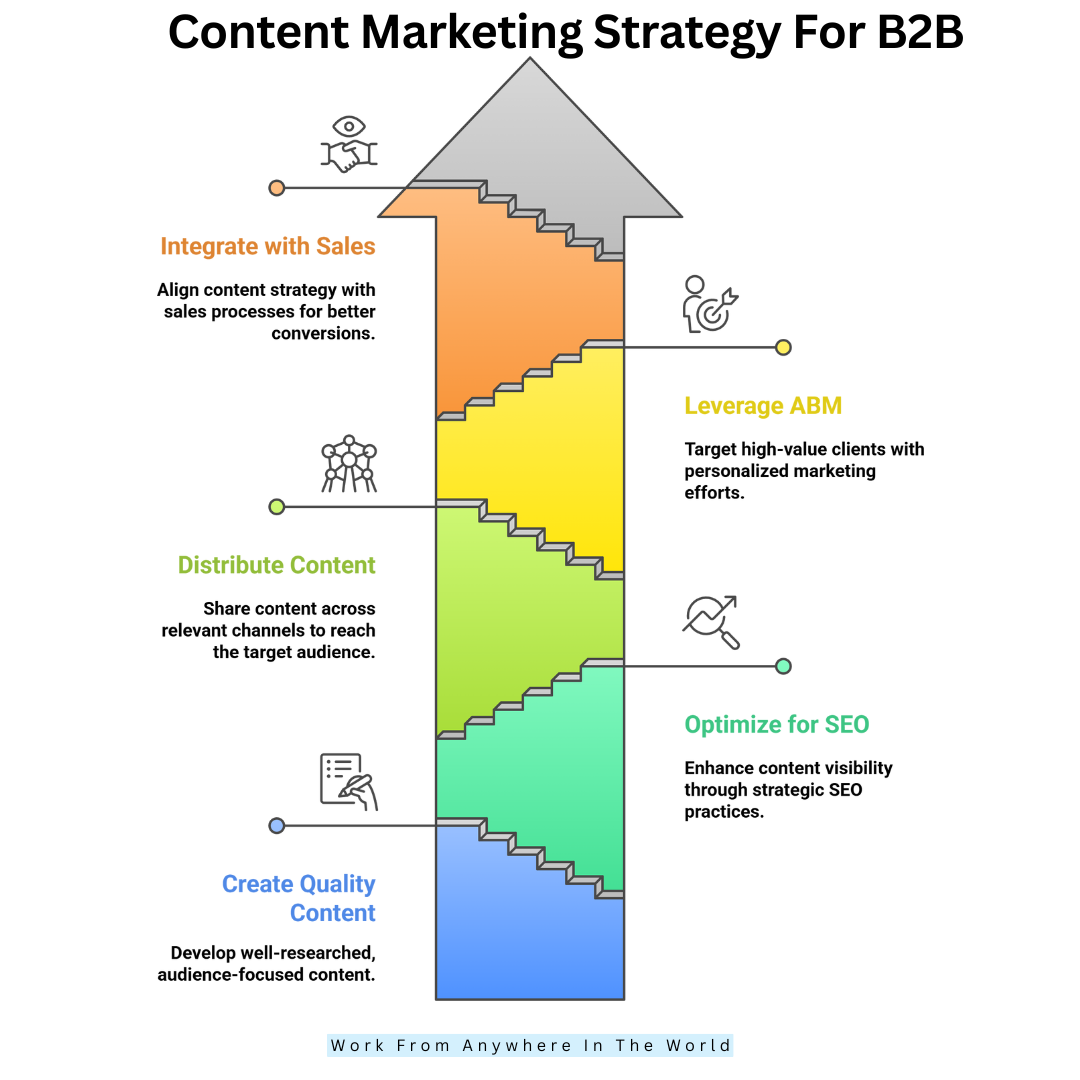
11. Collaborate With Industry Influencers
Partnering with influencers can expand your reach and strengthen credibility. Identify thought leaders, consultants, or subject matter experts in your industry.
Collaborate with them for guest blogs, webinars, social media takeovers, or interviews. Influencers lend authority and introduce your brand to new, relevant audiences.
Their endorsement builds trust faster than traditional advertising. Ensure the influencer’s values and audience align with your brand and track engagement metrics to measure campaign success.
Influencer content is particularly effective for generating awareness, driving top-of-funnel engagement, and positioning your company as a trusted voice in your industry.
Key Points
- Identify trusted experts in your space.
- Co-create content for cross-promotion.
- Builds trust with new audiences.
- Track campaign performance post-collaboration.
12. Measure Performance And Refine
Strategy Analytics guides continuous improvement. Track key performance indicators (KPIs), including traffic, bounce rate, lead generation, conversion rate, and content engagement with tools like Google Analytics, HubSpot, and SEMrush.
Compare results against your initial goals. Identify what’s working and where to improve. Are specific topics driving more leads?
Are videos outperforming blogs? Use insights to adjust formats, topics, or channels. Run A/B tests for headlines, CTAs, and content layouts.
Continuous measurement and optimization ensure your strategy stays effective, efficient, and aligned with changing buyer behaviours and market dynamics.
Key Points
- Set KPIs and track regularly.
- Use Google Analytics, HubSpot, and SEMrush.
- Learn from top-performing and underperforming content.
- Continuous refinement = better results.
Wealthy Affiliate – Mini Review (2025)
If you’ve ever thought about turning your blog, passion, or niche into an online business,
Wealthy Affiliate (WA) is one of the most beginner-friendly platforms I’ve used.
It combines step-by-step training, website hosting, SEO research tools,
and an active community all in one place.
What I like most: you can start free (no credit card needed),
explore lessons, test the tools, and connect with other entrepreneurs
before upgrading. WA isn’t a “get rich quick” scheme — it’s a platform where success comes
from consistent effort and applying what you learn.
13. Repurpose And Update Existing Content
Extend your content’s lifespan by repurposing high-performing assets. Turn a webinar into a blog series, infographic, or podcast.
Convert a whitepaper into short social posts or videos. Repurposing saves time, reinforces key messages, and reaches new audience segments.
Regularly audit old content and update it with new data, images, and links to maintain SEO rankings and relevance. Refreshing content also improves credibility, especially in fast-changing industries.
This approach helps you maintain a consistent publishing schedule, reduce content fatigue, and maximize return on your content creation investment.
Key Points
- Maximize content ROI through repurposing.
- Refresh old posts with new stats or visuals.
- Reach new audiences through multiple formats.
- Maintain content consistency and visibility.
14. Build A Strong Brand Voice And Tone
Consistency in voice and tone helps build brand identity and trust. Define a style that reflects your company’s personality—professional, conversational, authoritative, or friendly.
Use this tone across all content formats: blogs, videos, emails, and social posts. A strong brand voice makes your content more memorable and relatable.
Create a style guide with rules for grammar, tone, formatting, and terminology. This ensures every piece of content, regardless of the creator, feels cohesive.
A distinct voice differentiates your brand, fosters audience connection, and helps build emotional loyalty, even in logic-driven B2B environments.
Key Points
- Define and document your brand voice.
- Use a consistent tone across all content formats.
- Builds brand recognition and trust.
- Enhances audience connection and loyalty.
15. Use Marketing Automation Tools
Marketing automation platforms help you deliver the right content at the right time. Tools like HubSpot, Pardot, and Mailchimp allow you to create drip campaigns, segment your audience, and track user behaviour.
You can personalize content delivery based on interactions, such as sending a product guide after a whitepaper download. Automation also helps nurture leads, schedule social posts, and trigger email follow-ups based on user activity.
By streamlining repetitive tasks, automation frees up time for strategy and creativity, while ensuring consistent and timely engagement with your target audience across multiple touchpoints.
Key Points
- Automate repetitive tasks like email sequences.
- Segment the audience for tailored messaging.
- Use behaviour triggers to personalize content.
- Boosts lead conversion and saves time.
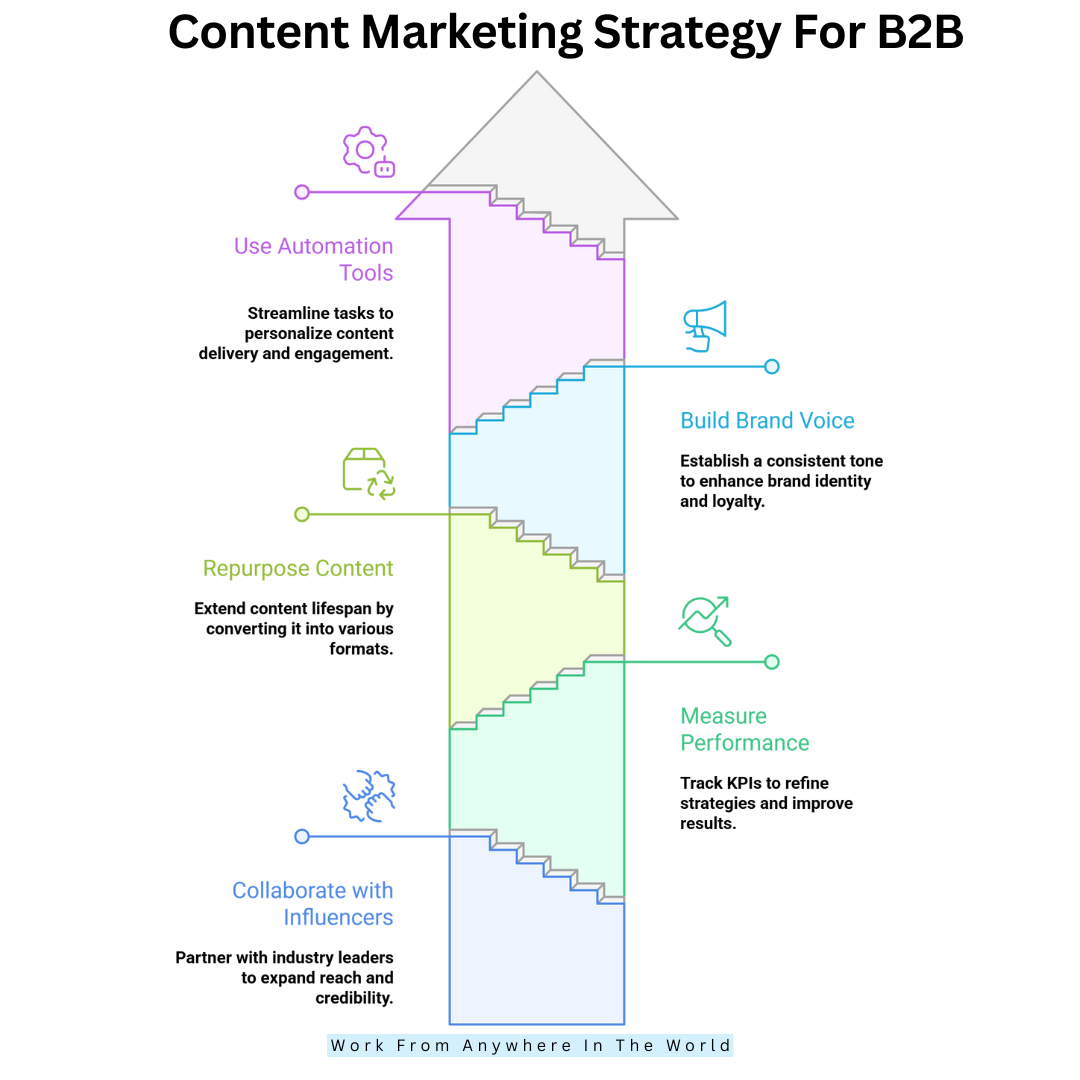
16. Encourage User-Generated Content And Testimonials
Customer stories build credibility. Encourage clients to share testimonials, participate in case studies, or create reviews. Highlight these across your website, landing pages, and social media.
User-generated content (UGC) fosters trust and offers social proof, especially in industries where peer validation is crucial.
Ask satisfied customers for LinkedIn recommendations, video testimonials, or quotes for your blogs. You can also feature them in guest webinars or success spotlights.
UGC humanizes your brand, validates your solutions, and influences buying decisions by showcasing real-world results from businesses similar to your prospects.
Key Points
- Highlight real customer success.
- Collect quotes, videos, or LinkedIn reviews.
- Builds trust and reduces decision hesitation.
- Influences buyers with relatable outcomes.
17. Foster Internal Content Ambassadors
Your employees can be powerful content advocates. Encourage staff from different departments to contribute ideas, blog posts, or videos. Their expertise adds authenticity and showcases your company’s human side.
Use LinkedIn or company newsletters to amplify their voices. Offer training or templates to make content creation easier.
Highlight internal contributors in public-facing content to boost morale and engagement. Employee-driven content not only expands reach but also strengthens your employer brand.
A knowledgeable, passionate team that actively shares insights signals industry leadership and builds greater trust among your audience.
Key Points
- Empower staff to share knowledge publicly.
- Feature internal content in newsletters or blogs.
- Humanizes your brand.
- Expands reach via employee networks.
18. Stay Agile And Innovate
The B2B content landscape evolves quickly. Stay agile by testing new formats like interactive tools, virtual events, or AI-driven reports. Monitor emerging platforms and shifting buyer behaviours.
Experiment with micro-content for faster consumption or immersive formats like webinars and live demos. Keep an eye on competitors and industry benchmarks.
Solicit feedback from your sales team and audience to identify content gaps or opportunities. Agility allows you to adapt quickly, seize new trends, and maintain relevance.
An innovative approach ensures your strategy remains forward-thinking, competitive, and aligned with ever-changing market demands.
Key Points
- Watch for industry and tech trends.
- Test formats like AI tools, virtual demos.
- Collect team and user feedback regularly.
- Being agile keeps your brand competitive.
19. Build A Sales Content Newsletter
Create a monthly or bi-weekly internal newsletter tailored for your sales team. Start by compiling new and updated content assets—blogs, case studies, videos, and whitepapers. Include performance analytics such as views, downloads, and conversion rates.
Add real-world use cases from other reps, customer feedback highlights, and tips on when and how to use each asset during calls or follow-ups. Use a simple layout and email platform like Mailchimp or HubSpot for easy distribution.
This process boosts content visibility, promotes adoption, and strengthens marketing-sales collaboration. Key benefits include improved communication, faster onboarding, and better alignment with sales objectives.
Key Points
- Highlight new and top-performing content.
- Share usage tips and real sales scenarios.
- Include key metrics and engagement stats.
- Add customer feedback and success quotes.
- Keep the layout clean and easy to scan.
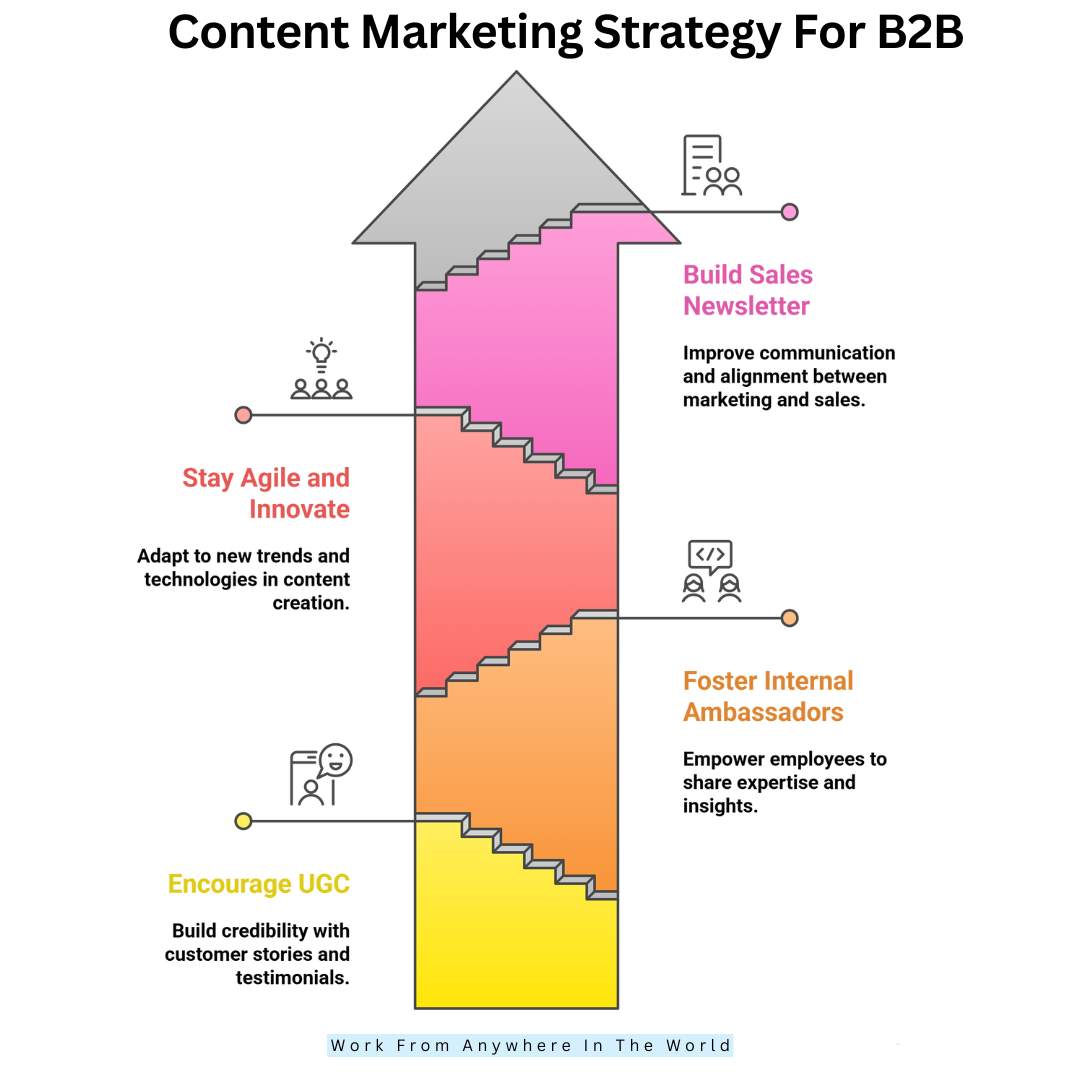
FAQs
Why Is Content Marketing Important For B2B Companies?
Content marketing helps B2B companies establish authority, generate qualified leads, improve SEO rankings, and educate decision-makers. It builds long-term relationships by offering value instead of aggressive sales tactics.
What Types Of Content Work Best For B2B Marketing?
Effective B2B content includes whitepapers, case studies, blog posts, eBooks, webinars, videos, and industry reports. These formats help address pain points, explain complex solutions, and support the buyer journey.
Conclusion
A strong B2B content marketing strategy can change the way your company interacts with its target market, establish credibility, and spur sustained expansion.
It creates a basis for long-term expansion and quantifiable commercial effects. By focusing on quality content, strategic distribution, and consistent value, you position your business for success in any market.
Ready to elevate your B2B game? Put these tactics into practice right now, and see how your content helps your company achieve tangible, quantifiable goals.
I trust you enjoyed this article on the Effective Content Marketing Strategy For B2B. Please stay tuned for more insightful blogs on affiliate marketing, online business, and working from anywhere in the world.
Take care!
— JeannetteZ
💬 Your Opinion Is Important To Me
Do you have thoughts, ideas, or questions? I’d love to hear from you. Please leave your comments below or email me directly at Jeannette@WorkFromAnywhereInTheWorld.com.
📚 More Work From Anywhere Reads
🚀 Ready to Build a Business You Can Run from Home
Or from Anywhere in the World?
Imagine creating income on your terms — from home, a cozy café, or wherever life takes you.
With the right tools, training, and community support, it’s entirely possible.
Start your own online business for free — no credit card needed.
Disclosure
This post may contain affiliate links. As an Amazon Associate and participant in other affiliate programs, I earn from qualifying purchases at no extra cost to you. Please read my full affiliate disclosure.

